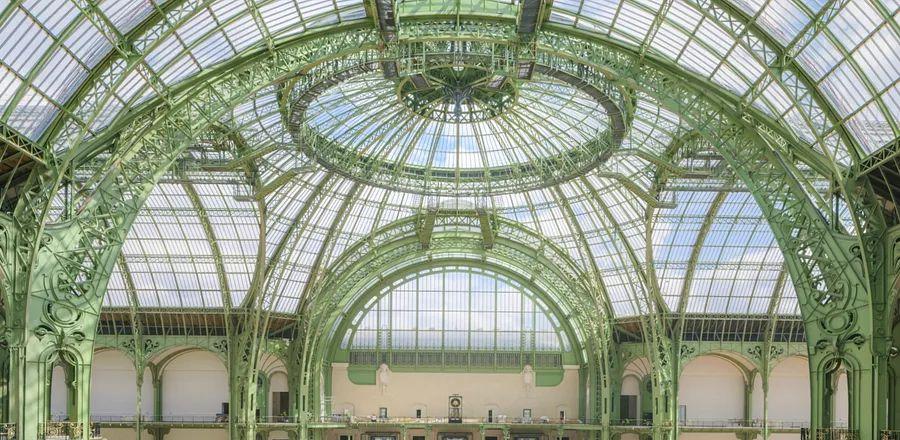Famous Paris Landmark to Reopen This Summer After Over Three Years of Closure

The Grand Palais, a key exhibition venue in Paris, is set to reopen this year following more than three years of extensive renovations.
From July 26 to August 11, the Grand Palais will welcome select members of the public to experience its nave during the 2024 Summer Olympic events in fencing and taekwondo.
This soft opening will give ticket holders for the Olympic events a chance to see the renovations that have revitalized the nave. The space will reopen in October for Art Basel Paris before closing again to complete the final renovations, with a full reopening anticipated in 2025.
To view the renovations this year, attendees must possess tickets for one of the Grand Palais events. However, according to the Réunion des Musées Nationaux-Grand Palais, the venue will be accessible to the general public in 2025.
The Grand Palais showcases a remarkable example of art nouveau interior design. Blending steel, stone, and glass, it stands as a testament to early 20th-century innovation. Visitors will have the chance to admire its most striking feature, the expansive glass ceiling, from within. This domed ceiling, which covers the central nave, spans 145,313 square feet, making it the largest of its type in Europe—a true Parisian highlight.
Harmonizing the past with the future

Image courtesy of Laurent Kronental for Chatillon Architectes
The Grand Palais was closed in March 2021 primarily to enhance accessibility, restore its original exterior sculptures, and renovate areas that had remained unused for many years.
Over the last three years, the urban planning, architecture, and interior design firm Chatillon Architectes has overseen the transformation of the Grand Palais. This meticulous process aimed to maintain the original design's integrity while introducing modern updates that enhance accessibility and fire safety.
The Grand Palais was originally crafted by a team of esteemed architects—Henri Deglane, Albert Louvet, Louis-Albert Thomas, and Charles Giraud. Since its opening in 1900, the magnificent interiors have seen various changes. Chatillon Architectes is dedicated to restoring the building to its original design ethos, ensuring that all enhancements respect the iconic structure’s legacy.
François Chatillon, the founder of Chatillon Architectes, revealed to The Art Newspaper that selecting the color for the new stone floor—which is now a coral-hued thermo-concrete—was a three-year endeavor, involving extensive discussions with France’s culture minister to preserve the exhibition hall's historical significance.
“Everyone knows the Grand Palais . . . yet it conceals many remarkable spaces that have remained hidden for decades due to continuous alterations,” Chatillon stated in a press release outlining the reopening logistics. He emphasized that the effort to refresh the original architects' designs, alongside the changes introduced in the 1960s by Pierre Vivien, embodies a ‘new architectural modernity’ that embraces historical continuity rather than disruption.
A renovation decades in the making

Photo courtesy of Laurent Kronental for Chatillon Architectes
In 1937, the Grand Palais management constructed a wall that divided the nave into two sections, blocking access between the east and west wings to accommodate the Palais de la Découverte in the west wing. Since then, this division has significantly limited the functional capacity of the space.
Upon reopening this summer, the wall will be removed, restoring the nave to its original splendor and design. This unification of both halves will enhance the interior coherence, allowing for larger events to be hosted.
Thanks to the new renovations, the Grand Palais will nearly double its capacity. Previously accommodating only 5,600 visitors, it will soon have the ability to host up to 9,000 guests simultaneously.
Reestablishing itself as a key center for cultural events—once more

Photo courtesy of Laurent Kronental for Chatillon Architectes
This reopening aims to restore the Grand Palais to its original purpose as an exhibition venue. Built in 1894 for the 1900 Paris Universal Exhibition, which showcased France's technological progress, the Grand Palais is often regarded as one of Europe’s most stunning event venues. Its metal structures and impressive glass ceiling add a timeless elegance to the events held there. The venue's leadership believes this renovation will attract some of Europe’s most awaited events to Paris.
The inauguration will mark a new chapter for this historic exhibition venue. The management of the Grand Palais aims to transform the space into a cornerstone for significant cultural happenings in Europe, with a schedule packed with exhibitions, concerts, and various celebrations planned ahead.
Following the fencing and taekwondo events at the 2024 Summer Olympics and Paris Art Basel in October, the agenda also includes Paris Photo, the world's largest international art fair dedicated to photography, scheduled for November.
In 2025, three areas of the Grand Palais will be accessible to the public free of charge. These include the Place de Centrale (the main plaza of the building), the Rotonde du Palais de la Découverte (the rotunda of the Palais de la Découverte), and the Salon Seine (a section featuring a shop, restaurant, and children's play area for visitors to unwind). These newly accessible spaces aim to enhance the Grand Palais's accessibility for both visitors and locals.

1

2

3

4

5
Evaluation :
5/5